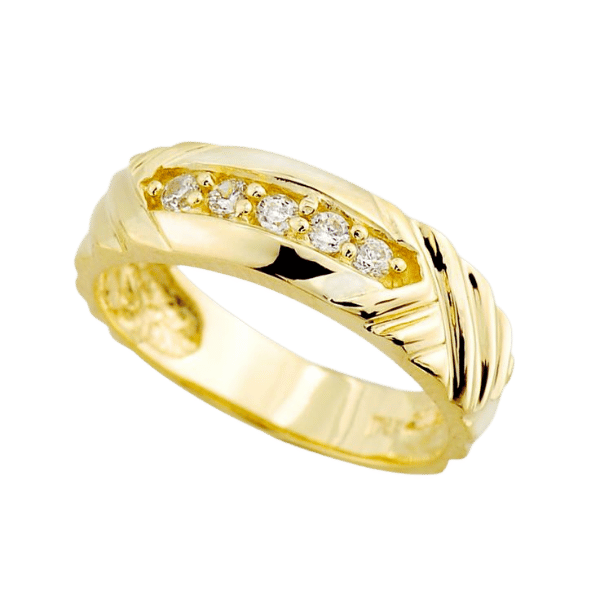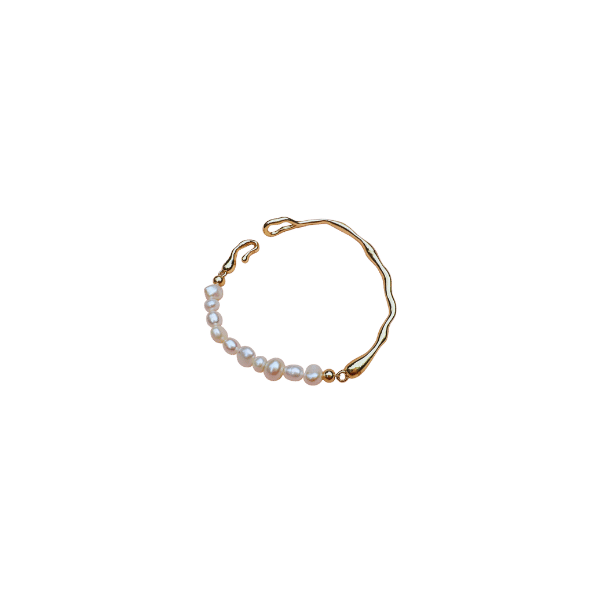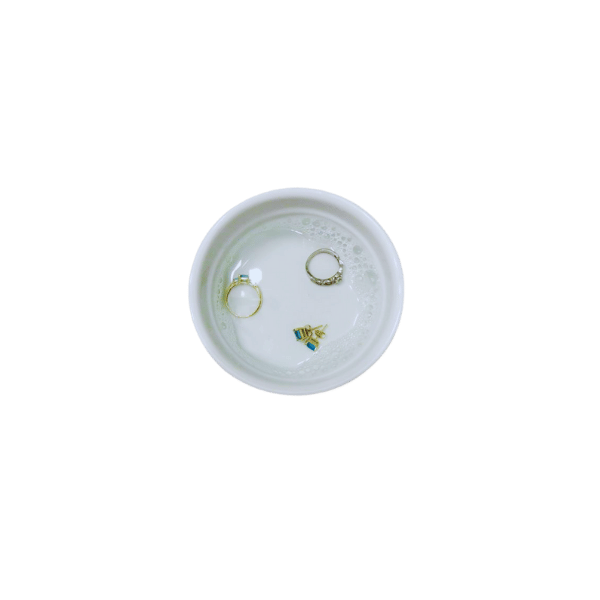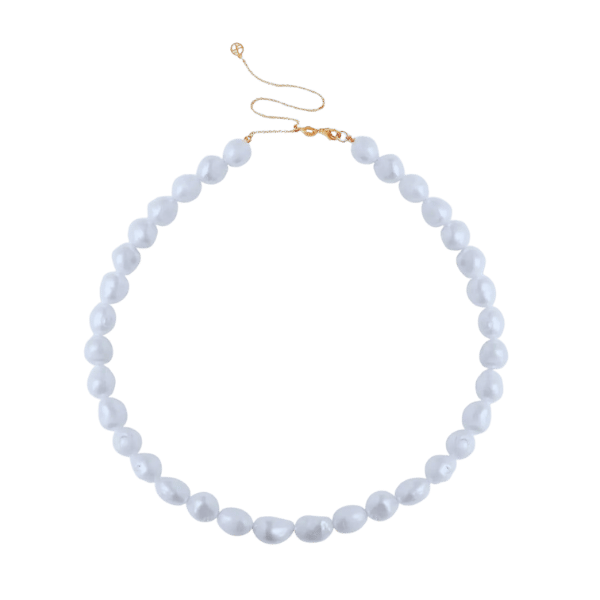Considering the numerous alternatives, selecting the appropriate gold for jewelry pieces can be challenging. One that has especially gained traction for years is 10k gold, which is exceptionally more durable and relatively budget-friendly. But is it suited for your preferences? This will discuss everything you need to know about 10k gold, including its distinctive composition and durability, and a comparison with 14k and 18k gold. Primarily, it's splitting up reputation and its standing relative to other gold types. After reading, you’d equip yourself with the appropriate information to determine whether 10k gold will suit your style, budget, and lifestyle. Whether buying an engagement ring, daily wear jewelry, or even a treasured gift, this guide will help you decide with conviction.
What is 10k Gold?

10k gold contains 41.7% pure gold along with 58.3% other metals, which may include silver, copper, or zinc. Due to its composition, it is the most durable and cost-effective type of gold used in jewelry. Although 10k gold has a lower content than 14k or 18k gold, it is my scratch and wear-resistant gold. Its depth of color is muted in comparison to higher karats, giving it grace and restraint.
Understanding 10 Karat Gold
10k gold is known to be inexpensive and durable, making it a favored selection for economical jewelry that can endure wear and tear.
Is 10k Gold Real Gold or Solid Gold?
Yes, 10k gold is real gold because it contains 41.7% pure gold, and the rest, 58.3%, comprises other metals, such as silver, copper, or zinc. Even though it has a lower gold content than higher-karat choices, it is still classified as genuine gold and passes the threshold required to be termed gold.
The Purity Level of 10k Jewelry
Of 41.7% pure gold, 10k gold is the lowest karat gold legally recognized as ‘real gold’ in most countries. The other 58.3% comprises alloy metals such as silver, copper, nickel, or zinc. These metals reduce the jewelry’s damage susceptibility by making it stronger and more durable, thus protecting it from bending or scratching far more than 14k and 18k white gold.
Due to its lower gold content, 10k gold has a less vibrant yellow color than 18k or 22k gold. However, it is more affordable and gold-attributes aesthetically appealing than its price. A word of caution for those with sensitive skin: the alloy metals used, particularly nickel, tend to cause allergic reactions.
Regarding context, pure gold (24k) is too soft for practical use, which is why the addition of alloy metals is needed for crafting gold-based items used in wearables. The lower gold content of 10k jewelry makes it more economical and budget-friendly for those seeking durable gold items. With proper maintenance, 10k gold jewelry can retain its appearance and value for decades, often masquerading in color as 14k gold.
Comparing 10k Gold with 14k and 18k Gold

Differences in Gold Purity
| Karat | Purity (%) | Durability | Color | Cost | Allergy Risk |
|---|---|---|---|---|---|
|
24K |
99.9 |
Very low |
Rich yellow |
Very high |
Very low |
|
22K |
91.7 |
Low |
Bright yellow |
High |
Low |
|
18K |
75.0 |
Moderate |
Warm yellow |
Moderate-High |
Low |
|
14K |
58.3 |
High |
Softer yellow |
Moderate |
Moderate |
|
10K |
41.7 |
Very high |
Pale yellow |
Low |
High |
10k Gold Color Versus 14k Gold
|
Parameter |
10k Gold |
14k Gold |
|---|---|---|
|
Gold Purity |
41.7% |
58.3% |
|
Durability |
High |
Moderate |
|
Color |
Pale yellow |
Rich yellow |
|
Price |
Lower |
Higher |
|
Skin Sensitivity |
Higher risk |
Lower risk |
|
Common Use |
Everyday wear |
Fine jewelry |
The Price of 10k Gold Compared to Other Karats
| Karat | Purity | Price/Gram | Durability | Color | Best Use |
|---|---|---|---|---|---|
|
10K |
41.7% |
$25-$35 |
Most durable |
Light |
Daily wear |
|
14K |
58.3% |
$35-$45 |
Durable |
Warm |
Jewelry |
|
18K |
75% |
$45-$55 |
Softer |
Rich |
Statement |
|
24K |
99.9% |
$55+ |
Softest |
Vibrant |
Ceremonial |
Why Choose 10k Gold for Gold Jewelry?

Durability and Everyday Wear
10K gold is famous for its strength and is an excellent option for daily wear, especially with gold earrings and jewelry pieces. Made up of 41.7% pure gold and stronger metals like copper, zinc, and silver, the gold is also more resistant to scratches and dents. Unlike 18K and 24K gold, which are softer due to their higher content, 10K gold is more effective during regular use.
For those searching for more affordable options, 10K gold has also proved to stand up to bending and warping. It is less likely to incur damage or scratches from everyday hand washing, work, or light physical activities. This durability makes engagement and wedding rings, as well as casual necklaces, ideal pieces to wear daily. Its value, along with its consistent durability, makes 10K gold a perfect fit for everyday jewelry that is designed for frequent use.
Gold Content and Affordability
The gold content in 10K gold is 41.7% pure gold, with the other percentage consisting of alloy metals such as silver, copper, zinc, or nickel. This makes it one of the most economical types of gold and enhances its durability. Comparatively, 14K gold contains 58.3% pure gold, and 18K gold contains 75%, both increasing their value and softness but making them less suited for daily wear.
Moreover, on the affordability front, 10K gold protects budgetary bounds while providing longevity and aesthetic appeal. 10K gold’s price sits lower than 14K and 18K options due to the lower gold proportion, and thus becomes a good pick for value seekers. Also, it is often used for dainty jewelry pieces as it does not require regular repairs or maintenance because of the fortified alloy metals.
Using 10k Gold for Engagement Rings and Wedding Bands
The blend of modern aesthetics and affordability makes 10K gold increasingly popular for engagement rings and wedding bands. 10K gold contains about 41.7% gold and other alloyed metals. Its greater resilience and hardness make 10K more suited for pieces worn daily than higher karat golds. Research shows 10K gold may be 20-30% harder than 14K gold, which adds an advantage in scratching and denting resistance.
In addition to yellow gold, 10k offers white and rose gold, giving it various color options. Other metals like copper, silver, or palladium are added to the gold, which allows the jewelers to make different shades for different tastes. For instance, rose gold is now widely used for its timeless and romantic appeal, which was made by adding copper into the mix.
10K gold does not compromise on quality while being affordable, making it a good choice for price-conscious customers. This gold is cheaper by 35-40% compared to 18K gold, which makes it much more advantageous when crafting detailed pieces. This makes it accessible for those looking for style and practicality on their wedding or engagement bands, especially considering 14k and 18k white gold.
How Does 10k Gold Compare to 24k Gold?

Understanding the Purity of Gold
The most refined kind of gold is 24K gold, which comprises 99.9% pure gold, whereas 10K gold contains 41.7% pure gold and other alloys, making it cheaper and more durable.
Weight and Wearability of the Purest Form of Gold
24K gold is nearly completely unadulterated and, as such, is significantly denser than alloyed golds like 10 K and 14 K. Take, for instance, jewelry; a 24K gold ring would take considerably more than a 10 K gold ring of the same dimension since 24K gold has a higher density. Regardless of the high purity, 24K gold has distinct challenges related to wearability. Its softness translates to being easily scratched, dented, and bent, making it less appropriate for frequent contact items like rings and bracelets.
To avoid these difficulties, 24K gold is best kept for ceremonial purposes and investments, which require high-purity assets. On the other hand, alloyed gold (10K or 14K) provides practicality and strength, perfectly accommodating daily wear. Depending on the purpose, the level of purity one desires, along with effectiveness, has to be weighed in when choosing the appropriate type of gold.
When to Choose 18k and 24k over 10k Gold
The differences between 10K and 18K or 24K gold are cultural value, aesthetic preferences, and the intended use. 18K gold, consisting of 75% pure gold and 25% alloy metals, balances grace and practicality. It works well for fine jewelry where deep yellow is valued, yet some durability is required. Because of this, 18K gold is favored for engagement and wedding rings as well as for sophisticated wear. It is especially popular among women sensitive to metals as it contains lower allergens because of less alloy content.
On the other hand, 24K gold is nearly pure, so it is ideal for investment pieces, ceremonial objects, and cultural and religious items where purity is important symbolically. Global jewelry market figures indicate high consumption of 24K gold within India and China since it is customary during weddings and festivals. Nonetheless, 24K gold is softer and more prone to damage, making it unsuitable for regular wear.
Considering the market situation, the price is usually higher for 18K and 24K pieces because of the greater percentage of gold they contain. The decision to choose these categories instead of 10K gold should be based on the purpose, budget, and duration of use expected from the item. For pieces intended as family heirlooms or for multifunctional wearable luxury, 18K gold is best, while 24K is unparalleled in value for purity and traditional standing.
Factors to Consider When Shopping for Gold Jewelry

Choosing the Right Type of Gold
| Gold Type | Purity (%) | Durability | Color | Cost | Best Use |
|---|---|---|---|---|---|
|
10K |
41.7 |
Very durable |
Pale yellow |
Most affordable |
Everyday wear |
|
14K |
58.3 |
Durable |
Warm yellow |
Affordable |
Rings, daily jewelry |
|
18K |
75.0 |
Moderate |
Rich yellow |
Expensive |
Fine jewelry |
|
22K |
91.7 |
Less durable |
Deep yellow |
Very expensive |
Heirlooms, delicate |
|
24K |
100.0 |
Soft |
Bright yellow |
Premium |
Investment pieces |
Understanding Gold Jewelry Terms
- Karat (K): Denotes the purity of gold, with 24K representing pure gold and lower karats having a greater percentage of alloyed metals.
- Alloy: Gold amalgamated with other metals like copper, silver, and nickel to improve the gold’s durability and change its color.
- Plating: A thin layer of gold applied to the surface of another metal, usually cheaper metals, to make more affordable gold jewelry.
- Hallmark: Stamped certificates marked on gold jewelry, which show the purity, the maker, or where it was made.
- Vermeil: A form of gold plating accrued on sterling silver that has defined standards in terms of thickness and quality.
- Yellow Gold: A more traditional shade of gold which is gained through an addition of copper and silver, found in gold chains and other pieces of jewelry.
- White Gold: A gold alloyed with metals like palladium or nickel, which gives a silvery-white appearance; it is usually rhodium plated for luster.
- Rose Gold: An alloy of gold mixed with a high percentage of copper, giving it a pinkish tone.
- Gold-filled: It consists of a base metal with a thick layer of gold bonded to it, making it more scratch-resistant than solid gold.
- Carat: Relating to gemstones, carat is a unit of weight not related to the purity of gold.
Budgeting for Fine Jewelry
A defined budget is essential when investing in fine jewelry, as the intricately crafted pieces come at varying prices. The brand, materials used, complexity of the work, and additional gemstones all contribute to the final cost. For instance, the pricing structure of gold jewelry is relative to the current market price of gold and its karat weight, which is subject to market fluctuations. In the current marketplace, 14-karat gold jewelry sits between $50 and $100 per gram, while 18-karat gold is priced even higher due to its higher gold content, making 10k gold cheaper than 14k gold.
Another significant aspect that adds to jewelry value is gemstones. Diamonds, for instance, are evaluated based on the "4 Cs": carat weight, cut, clarity, and color. Depending on these factors, a high-grade one-carat diamond may range from $2,000 to $20,000. Emeralds, sapphires, and rubies also have relatively lower price points based on size and quality. These gemstones can also be found in synthetics or lab-grown versions, which are 20-40% lower than their natural counterparts, making them a more cost-effective option.
Also, investing in timeless designs or classic pieces might hold greater worth as time passes. By skillfully managing your tastes, the materials you select, and prevailing market trends, you can curate a jewelry collection that enhances your monetary objectives.
Frequently Asked Questions (FAQs)
Q: What is 10k gold?
A: 10k gold is an alloy comprised of 10 parts pure gold and 14 other metals, making 10k gold 41.7% gold. It is the most affordable type of gold used in rings and other fine jewelry, as it is cheaper than 14k or 18k gold.
Q: How does 10k gold differ from other types of gold, like 14k or 18k?
A: The primary difference is the Percentage of pure gold in each type. 10k gold contains 10 parts pure gold, making it 41.7% pure gold; 14k gold contains 14 parts pure gold, 58.3% pure gold; and 18K is 75% pure gold. Thus, 10k gold is less pure and is often denser and more challenging, allowing it to be worn daily as jewelry.
Q: Does 10k gold work well for rings or bracelets?
A: Due to its lower 10% gold content, 10k gold works well for jewelry worn often, such as rings and bracelets. This means 10k gold is more durable and better for everyday jewelry. However, the lower percentage of gold does mean it won't have the rich color associated with higher karats like 14k or 18k yellow gold.
Q: What colors of gold are available for 10k?
A: 10k gold can be classified into different colors: yellow gold, white gold, and rose gold. The color of the gold is attributed to certain alloy metals combined with pure gold. Yellow gold is the most basic and traditional, white gold is modern, and rose gold has a distinct pinkish hue.
Q: May I sell my 10k gold jewellery?
A: Yes, you can sell your assets, including jewelry made of 10k gold. As with any commodity, the price you receive will depend on its market value, as well as the weight of the piece. Because of the lower purity of gold in 10 karat gold items, their value is generally lower than that of 18k and 24k gold.
Q: Is 10k Gold Hypoallergenic?
A: Due to the increased percentage of alloy metals in 10k gold compared to higher carat gold, it may not be hypoallergenic for many people. Individuals with a metal allergy, especially to nickel, could find it problematic and may experience some reaction. Still, it is always recommended to check the specific details of the piece and consult with a jeweler.
Q: What Precautions Should I Take To Maintain My 10K Gold Jewelry?
A: The primary focus should be cleaning regularly with mild soap and water. Polishing it with a soft cloth will keep your 10k gold pieces shining. Harsh chemicals or any abrasive materials should be avoided. Keeping each jewelry piece in a separate pouch or container is best to prevent scratches. This, along with regular maintenance, helps retain its polished look.
Q: Is 10k gold recognized as real gold?
A: Yes, 10k gold is recognized as real gold because it contains gold, although at a bare minimum amount. In most countries, a gold piece is considered authentic if it is 10 karats or above.
Q: Why is 10k gold cheaper than 14k or 18k gold?
A: 10k gold is cheaper because it contains less pure gold than 14k or 18k gold. Because of the lower percentage of gold, it is cheaper and also more durable, resistant to scratching and denting.
Q: Is 10k gold suitable for a gold ring?
A: Yes, 10K gold would be suitable for a gold ring, particularly if you want something more affordable and durable. Although 10 K gold does not have the warm, deep color of higher karat gold, its unmatched durability makes it ideal for everyday wear jewelry.
Reference Sources
Determination of Gold Coating Thickness Measurement by Using EDXRF - Treats the subject of gold coatings and describes 10 karat gold in forms of production and classification.





